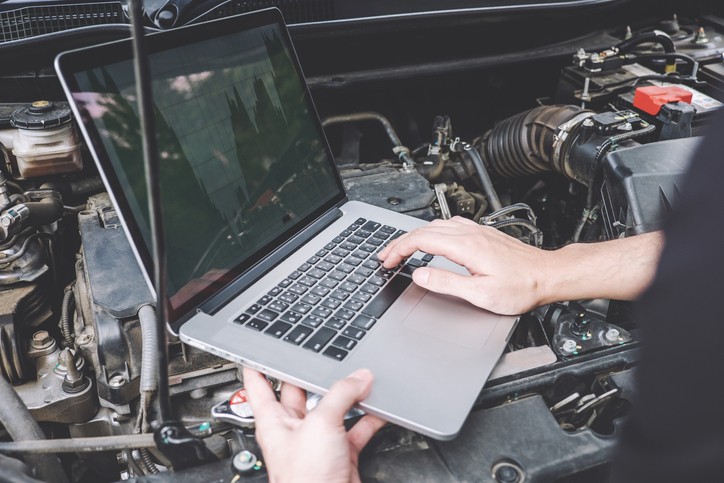For car owners looking to maintain peak vehicle performance or address specific issues, understanding the process of car computer programming is essential. Modern vehicles, particularly those from 1996 onwards, rely heavily on sophisticated computer systems, known as Engine Control Modules (ECMs) or Powertrain Control Modules (PCMs), to manage everything from fuel injection to emissions. Reprogramming these computers, sometimes referred to as flashing, is a procedure that updates the software controlling these systems, ensuring your car runs smoothly and efficiently. But a common question arises: how long does this process actually take?
 Car Computer Reprogramming
Car Computer Reprogramming
Reprogramming your car’s computer is akin to updating the operating system on your personal computer or smartphone. Over time, or due to specific issues, the software in your car’s computer might need refreshing. This could be to optimize engine performance, improve fuel efficiency, or rectify problems arising from outdated or corrupted software. Think of it as a digital tune-up for your vehicle. For those seeking enhanced engine power, reprogramming can also be tailored to maximize performance output, offering a noticeable boost in how your car drives. Furthermore, if your car has been operating for years, the factory settings might become overly sensitive, impacting drivability. Reprogramming can recalibrate these settings to restore optimal performance.
One common symptom indicating a potential need for computer reprogramming is the persistent check engine light. While a check engine light can signal various mechanical issues, it can also be triggered by software glitches within the PCM. For example, if the PCM, which manages components like the EGR valve, isn’t responding correctly due to a software issue, reprogramming the computer to its correct operational parameters can resolve the problem and turn off the light.
So, what’s involved in this process, and how long should you expect it to take? Reprogramming is typically performed by connecting a specialized scanner, linked to an online database, to your car’s diagnostic port. This port, usually located beneath the steering wheel, provides access to the car’s computer system. The scanner first erases the existing software and then uploads the latest, manufacturer-approved software. The duration of this process isn’t fixed and can vary based on several factors.
The time it takes to reprogram a car computer is influenced by the vehicle’s make and model, as well as the size and complexity of the software update. Larger software packages naturally take longer to download and install. Generally, you can expect the process to range from approximately 15 minutes to an hour. However, unforeseen issues during installation, such as software glitches or interruptions, could necessitate restarting the process, potentially adding to the overall time.
In conclusion, reprogramming your car’s computer is a valuable service that can enhance your vehicle’s performance and address software-related issues. While some mechanics might suggest routine reprogramming, it’s generally not needed unless you are experiencing specific problems, there’s a manufacturer recall, or you’re looking to optimize performance. And when considering the time commitment, knowing that it typically falls within the 15-minute to one-hour window can help you plan accordingly for this beneficial vehicle maintenance procedure.